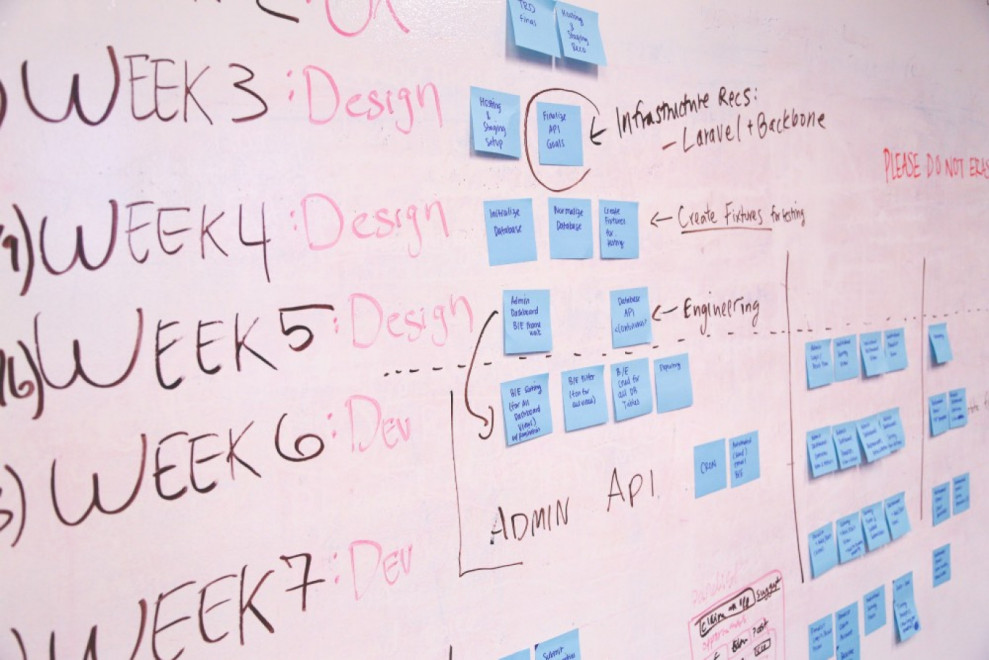Most of the management boards agree to organize such training while not expecting any results.
The first myth is the slogan often uttered by leaders that HR is responsible for developing the organization how development is HR! This is one of the stereotypes, but if we agree that it is not true, whose shoulders bear this responsibility?
Boss is responsible for the development.
The role of HR is to implement its plans. It is as if the team coach was washing his hands of responsibility by blaming the mental coach with it, and unfortunately, that still happens a lot. It is to us that "broken" employees are sent with a demand to repair, train, and motivate.
If you look closely at modern enterprises, you can see that they lack a framework, a development system, thanks to which leaders can lead development processes. If the leader is convinced that solving the problem lies beyond his / her responsibility, he will be convinced that he cannot solve it. However, this stick has two ends because on the other side is HR, which takes on these unwanted tasks.
Today's training companies cannot keep up with their former management partners; the markets are too dynamic and the changes too rapid. Their place should be taken by HR as a learning partner and leader-trainers. Their new role is to know the tools and systems that training companies teach about and implement them regularly.
The third piece of the puzzle is the worker who needs to be encouraged to grow and who needs to be armed with the tools. This is because the mere call for development without a system to make it possible is groundless and vague.
Development during training.
Development is a process, not an event. The training ground is between them and after them, when the acquired skills are tested and implemented.
How much will your musculature develop when you go to the gym once, torment your body with exercises? And what will happen with the motivation for tomorrow's training?
And this is most often what training for leaders looks like. Intensive, filled to the brim with content training, certificate, and so on, we have a new, better leader. Therefore it doesn't work; it has no right to work!
What happens if you go to the gym once a week, but regularly and for a while? Then and only then will you begin to notice the differences and make progress.
What if you brush your teeth twice a year? It is the same with leadership development; it has to be "everyday practice," and the trainer is there to assess progress and give tips. On the other hand, you are under the supervision of a leader and trainer, practice and change in the process.
Development, more than climbing a mountain, is like climbing stairs with very high steps. While carrying out your tasks, from time to time, you face a problematic wall. And this is a perfect time for your employees, as it can be a symptom of their growth. Development is a path from problem to problem, and this is how leaders should be trained. We regularly, from time to time, do the so-called STOP STOP. There are only two reasons why we are forced to stop in front of an obstacle.
The first barrier is the competence barrier: when I can't do something. The second is the mental barrier, the conviction that I can't do something. We recognize both of these barriers during the STOP Stop, here we examine and find out what element of the task is too difficult for us, or maybe it just seems to be so? Later, we learn a given skill and, armed with it, release it into the world.
Development is a tedious process.
Therefore, it is required that it be interesting, varied, and the trainer should also be assessed in the survey. These are all symptoms that the training world has turned upside down. Training must be conducted systematically and systematically. In each "training" we take up the challenge in the place where we left it in the last training. I do not organize one-day trainings and do not agree to just any training.
Another myth is that attitudes do not change; only competencies change. The result comes from the actions; wherefrom the actions? Actions are the fruit of decisions, and decisions? Decisions come from attitudes or emotions, and where do they come from? Emotions are the result of assessing the potential of actions. The potential comes from beliefs. If you are convinced of the venture and invest a lot in it, being convinced of its meaning, you will achieve a huge result. Conversely, a lack of conviction leads to cautious, hesitant actions that do not produce positive results.
Without changing beliefs, we will not see new potential in the team.
The fifth myth to debunk is that training must have a curriculum. Our training courses do not have a program, and here's why: we agree on training goals and motivations with the management board and those trained before the workshops, while the program is created during its implementation. This is unthinkable for many HR professionals!
In sport, what training looks like translates into results. A good coach first observes his players and assesses their competencies. Then he contracts with them the goal, the effort to be made. He still thinks about what to add, what to include and what to fix to achieve it.
In business, the opposite is true; the trainer pushes the trainees into his already existing program and expects results. People will not learn when commanded and remember little of the lectures they hear.
Competency training must be combined with mental training. For this, there must be a community of individual and group goals on every level, from the management level through leaders, trainers, and trainees.
Today, leaders are coaches and vice versa, coaches easily become leaders, and you, dear HR person, must be a partner for the boards!


 Posted on Mar 26, 2021 by Anna
Posted on Mar 26, 2021 by Anna


